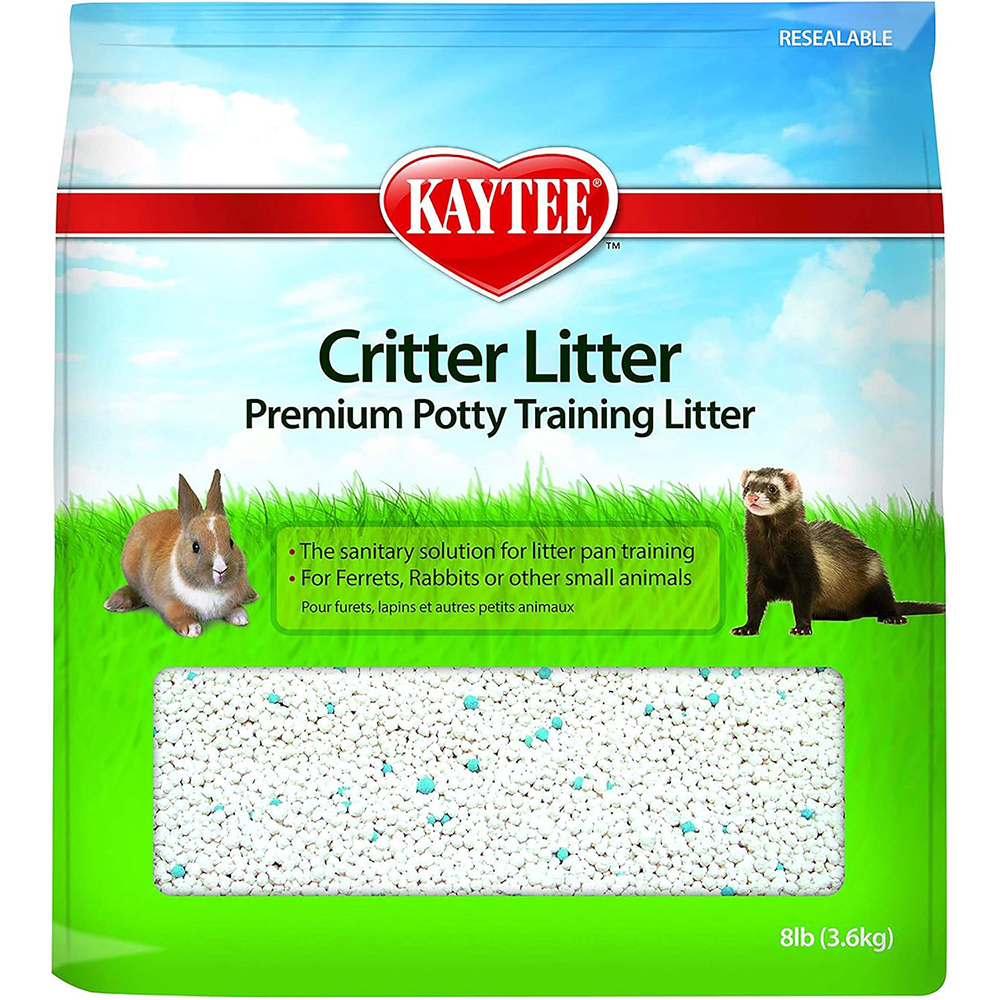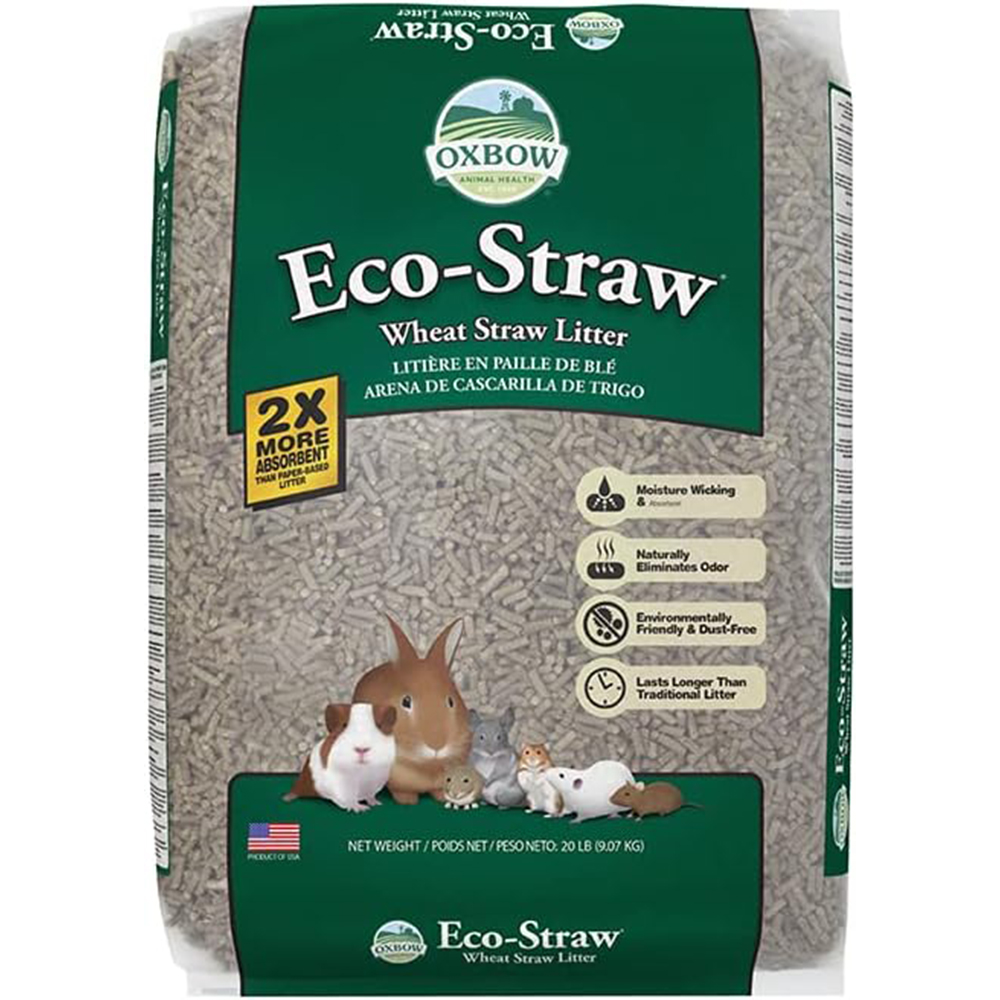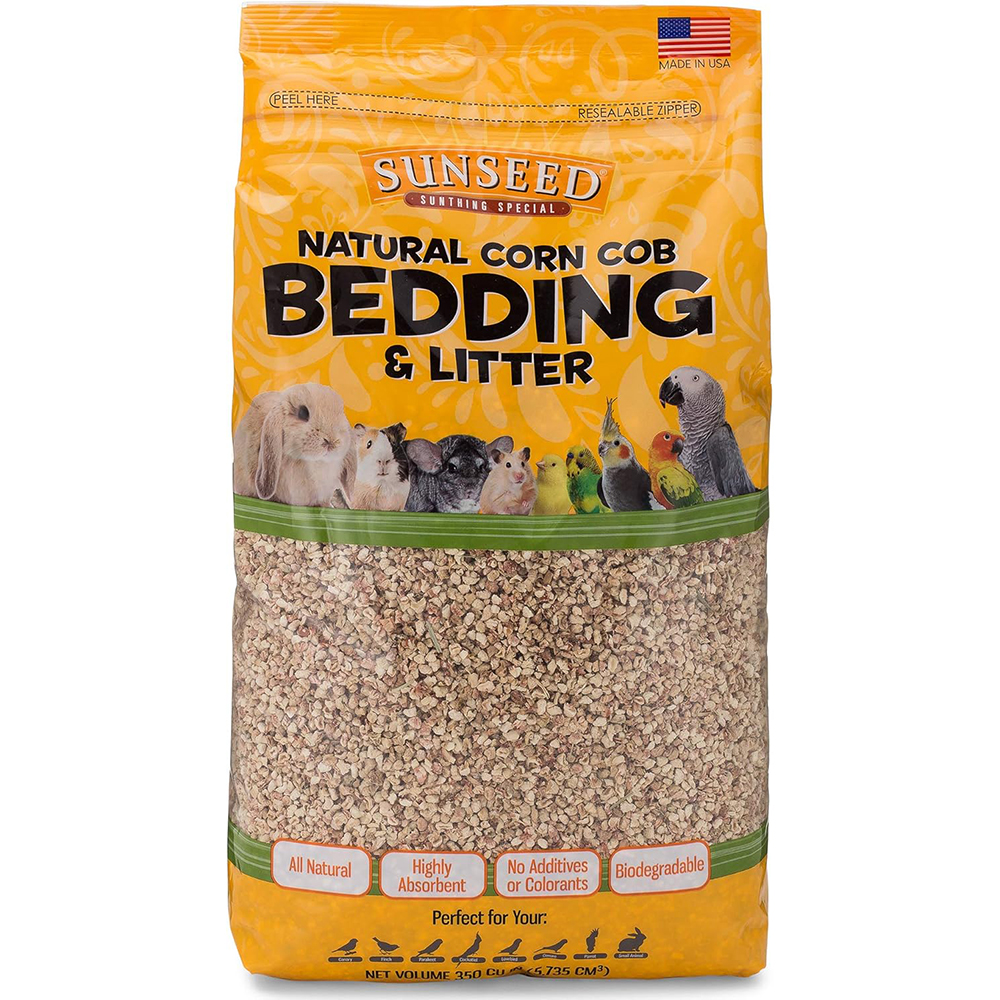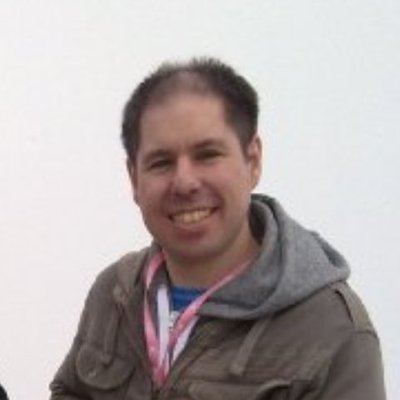Best litter for rabbits 2026 for cleanliness and comfort
Finding the best litter for rabbits will make cleaning up less of a chore

Choosing the best litter for rabbits may not sound like the most exciting of tasks but getting it right will make life much easier and comfortable for both you and your bunny. The aim is to provide a clean and inviting space for a rabbit to pee and poop while also ensuring it doesn’t have an adverse impact in your home. To that end, you need to consider the material used, its absorbency and its ability to control odor.
With the rise in popularity of the best indoor rabbit hutches, you also need to think about dust. If you use a lot of litter, then you certainly don’t want particles spreading around your home and, just as importantly, getting into your rabbits lungs. One thing’s for sure, you need to avoid the best cat litters, too. “Don’t be tempted to use clumping cat litter because if your rabbit ingests this it could cause blockages in their digestive system,” says expert vet Dr Rebecca MacMillan.
Instead, use material that will encourage your bunny to make use of the litter since figuring out how to litter box train a rabbit will be easier if you provide an ideal environment, which includes one of the best rabbit litter boxes. Indeed, as we’re about to see, there’s plenty of great products on offer so let’s check the best litter for rabbits and explore the different materials you can buy.
The best litter for rabbits 2026

Best overall
Paper-based litter is highly recommended, not least because it’s seen to be very safe for rabbits. In some instances you may find the paper contains baking soda which isn’t always desirable because the salty taste can encourage some bunnies to have a nibble, potentially upsetting their gut pH. But that isn’t the case here and, what’s more, the product doesn’t suffer for it.
Fresh News’ recycled paper litter comes from recycling centers and it’s ultra-absorbent with the maker saying it retains three times more than clay. It’s pretty much dust free (99%) and non-allergenic and it’ll also biodegrade as you’d expect. The upshot is that the litter isn’t going to smell and you’re doing your bit for the environment. In fact, some say that the litter box can go as much as a week without smelling. Just make sure you’re buying the small animal litter and not the one aimed at cats – the latter contains baking soda.
Reasons to buy: It’s a safe, biodegradable litter that can remain odor-free for ages.
Reasons to avoid: Some buyers on Amazon have reported seeing plastic pieces in the litter.

Best for potty training
If you’re potty training your rabbit, then it’s worth considering this bentonite-based litter. It’s been especially designed for litter pan training and, since it’s 99% dust free and non-toxic, the manufacturer says it will be safe for your rabbit while also making life much easier for you.
Since it absorbs moisture on contact and is able to take in 10 times its weight in liquid, you can concentrate on getting your rabbit to urinate and poop without having to spend loads of time cleaning up. Indeed, the litter reduces the need to clean the cage by 30% so, while it will need daily maintenance, you’ll only need to replace it every two or three days.
That said, it’s advised you don’t fully clean up. Some soiled bedding or dropping in the litter pan can encourage rabbits to use the litter. Once your rabbit is trained, you can then move on to an alternative product.
Reasons to buy: This litter will make potty training a rabbit less of a chore, allowing you to concentrate on the task in hand.
Reasons to avoid: You need to dispose of the soiled litter in the trash so it’s not as eco-friendly as some other products.

Best for providing warmth
Experts generally recommend having some straw to hand, especially if you are going to be using pellets or newspaper as the primary litter. It adds comfort due to its soft properties and it also provides warmth. It can be used alone too and this product is among the finest for all such purposes.
Made entirely from 100% wheat straw, this dust-free litter will absorb 300% of its weight in moisture while naturally neutralizing odor. Since it will expand and clump when it’s wet, it will also last longer than traditional bedding, providing excellent value for money. What’s more, if you’re using it as a covering for other litter then you won’t need to use much of it either.
We also love that it’s entirely safe for rabbits. Even if they end up eating it, they’ll come to no harm from the natural fiber in the wheat grass. As buyers agree, it’s an amazing litter to have around.
Reasons to buy: These dense, absorbent pellets are soft and inviting for rabbits and do a great job at keeping smells at bay.
Reasons to avoid: You can use the straw by itself but for even better absorption and odor control, you’ll need to combine it with another product.

Best for saving money
Most bedding could double up as litter but this product is directly aimed at both uses. It means you won’t need to buy separate litter and bedding, instead making use of a natural material that is super absorbent and biodegradable while also being free of artificial dyes, scents and additives.
That’s not to say the product won’t smell. It will but it’ll be pleasant. It’ll help to mask the odors associated with pees and poops while ensuring your pets remain nice and dry. The major downside is that the corn is tiny which makes it prone to going everywhere if your rabbit decides to kick about. But regular tidying is a small price to pay for an environmentally and rabbit-friendly product.
Reasons to buy: The corn looks great in a rabbit enclosure and it helps to mask odors.
Reasons to avoid: The corn is small and that means the immediate area outside the litter box could get messy.

Best hypo-allergenic litter
This product claims to absorb more liquid than 40lbs of clay litter. And what’s it made out of? Coconuts. That certainly caught our attention primarily because it’s unusual but also because its hypo-allergenic and non-toxic. Sure, coconut is very high fat but this isn’t designed to be eaten.
Another unusual move is situated inside the bag. You’ll find a pouch packed with steam-activated charcoal from coconut shells. You're supposed to mix this with the litter to further help control any odors (the coco chip should do a good job of it as well). It’s a little bit fussier than other products but you get to control exactly how much you include depending on whether your rabbit has active bowel habits or not. It’s a litter that is well worth considering, more so given that it doubles up as bedding.
Reasons to buy: It makes use of entirely natural coconuts that are great at retaining moisture.
Reasons to avoid: You may find having to add an odor control to be a little bit of a hassle.

Best natural rabbit litter
Rather than lay down litter in the tray, why not add some real, natural grass? It’s how your rabbit may well go in the wild and given it’s very absorbent, you shouldn’t have to put up with excess moisture or smells.
If you do opt for this product, be aware that you’ll need somewhere to put it. There are interlocking trays available so you can buy as many or as few grass pads as you need. You can also buy the trays with a pad so you can instantly get a feel of how it’s going to work out.
It’s definitely a novel idea but be prepared for some maintenance. The company advises misting the grass on occasion to keep it green for longer and to lightly water any areas that look as if they are drying out. Each pad will last between two and four weeks and when you’re finished with it, you can pop it in a compostable bin.
Reasons to buy: It’s real grass that absorbs moisture and helps to control odor.
Reasons to avoid: You need to keep on top of the grass to keep it lasting as long as possible.
How we compared the best litter for rabbits
Safety was a primary concern when shopping around for the best litter for rabbits. Given a bunny is going to be using litter often, we needed to be sure that the litter was soft and that it would be as dust-free as possible to avoid respiratory issues and would be sharp. We also considered:
Smells: We looked for litter that would control odors. No-one wants a stinky home.
Cleanliness: It’s important that spoiled litter can be easily and quickly cleaned.
The environment: Throwing litter into the bin seems wasteful so we were on the lookout for any litter that could be recycled or composted.
What do vets recommend as the best litter for rabbits?
There are other specific factors to consider when looking for the best litter, all of which take into consideration the health of your rabbit. According to expert vet Dr Rebecca MacMillan, the best litter to use in a rabbit’s enclosure and litter box is an unscented paper-based product.
“There are different types of paper-based litter available, including pulped, shredded, and pellets,” she says. “These all carry the same advantage of being low in dust, to reduce triggering respiratory issues. Paper-based products tend to be pretty absorbent too.”
If you do opt for paper, however, then you may need to supplement it.
“When choosing your litter, you may also want to consider the comfort of the product for your rabbit so if you choose paper pellets then you may want to put a layer of dust-extracted straw over the top to make them softer and more comfortable,” Dr MacMillan adds. She also advises you to avoid any shredded paper that has ink on it as some types of ink can cause issues if ingested.
What litter for rabbits should be avoided?
Just as there are litters best suited for rabbits, so there are litters that you really need to steer clear of and Dr Rebecca MacMillan says sawdust and wood shavings should be top of the list.
“Sawdust can irritate the respiratory tract and the skin, due to the oils/phenols contained in the wood as well as all of the fine particles of dust.”
She also says you need to avoid clumping cat litter just in case your rabbit decides to have a nibble only to find it causes a very unpleasant blockage.
“You should also steer clear of any products that are scented,” she says.
What household items could be used as litter?
What if you’re in a bit of a jam and you either don’t have any litter left or your waiting for your litter order to arrive. Is there a material that may be knocking around your home that you could use temporarily? Dr Rebecca MacMillan suggests using newspapers – and we’re talking the actual printed products here, of course: those rarities which you may have seen in a store.
Joking aside, newspapers are actually great. “If you are in a fix, you could use newspaper to line your rabbit’s cage but ideally cover this with a layer of dust-extracted straw to reduce the chances of your rabbit nibbling on it,” Dr MacMillan says.
“It is safer to use plain, non-glossy newspapers that are printed with non-toxic ink [most are these days]. If you are not sure, rub your finger over the print. Safe soy-based inks won’t smudge, whereas petroleum-based ink will.”
How often does litter for rabbits need to be changed?
Litter will get soiled. It’s what it’s there for but you can’t just leave your rabbit to live with it for days on end. It needs cleaning otherwise it could become harmful to your pet. How often cleaning your rabbit’s enclosure needs to happen depends largely on the type of litter you use but daily maintenance and removal of poops is essential.
“Rabbit litter should be changed frequently to keep your rabbit clean and to avoid the build-up of ammonia in the environment,” says Dr MacMillan. “Spot-checks to remove small amounts of soiled litter should be performed daily, but a full change of the litter needs to happen once a week.”

Rebecca is a vet surgeon who graduated from the Royal Veterinary College in 2009. She has a wealth of experience in first opinion small animal practice, having done a mixture of day-to-day routine work, on-call emergency duties and managerial roles over the years. She enjoys medicine in particular and she is proud to have recently achieved a BSAVA postgraduate certificate in small animal medicine (with commendation). She writes on various feline and canine topics, including behavior, nutrition, and health. Outside of work and writing she enjoys walking her own dog, spending time with her young family and baking!
Get the best advice, tips and top tech for your beloved Pets

David Crookes has been a journalist for almost 30 years and he has written for a host of magazines, newspapers, websites and books including the World of Animals Annual, BBC Earth, Live Science, The Independent and Tom’s Guide.
Born in England, he lives with two cats but he’s also keenly interested in the differences between the huge number of dog breeds – in fact, you can read many of his breed guides that he’s written in collaboration with vets here on PetsRadar.
With a lifelong passion for technology, too, he’s always on the lookout for useful devices that will allow people to keep their pets happier and healthier, and provide them more time to spend together.
David has a degree from Durham University, as well as postgraduate diploma in journalism from the University of Central Lancashire.
